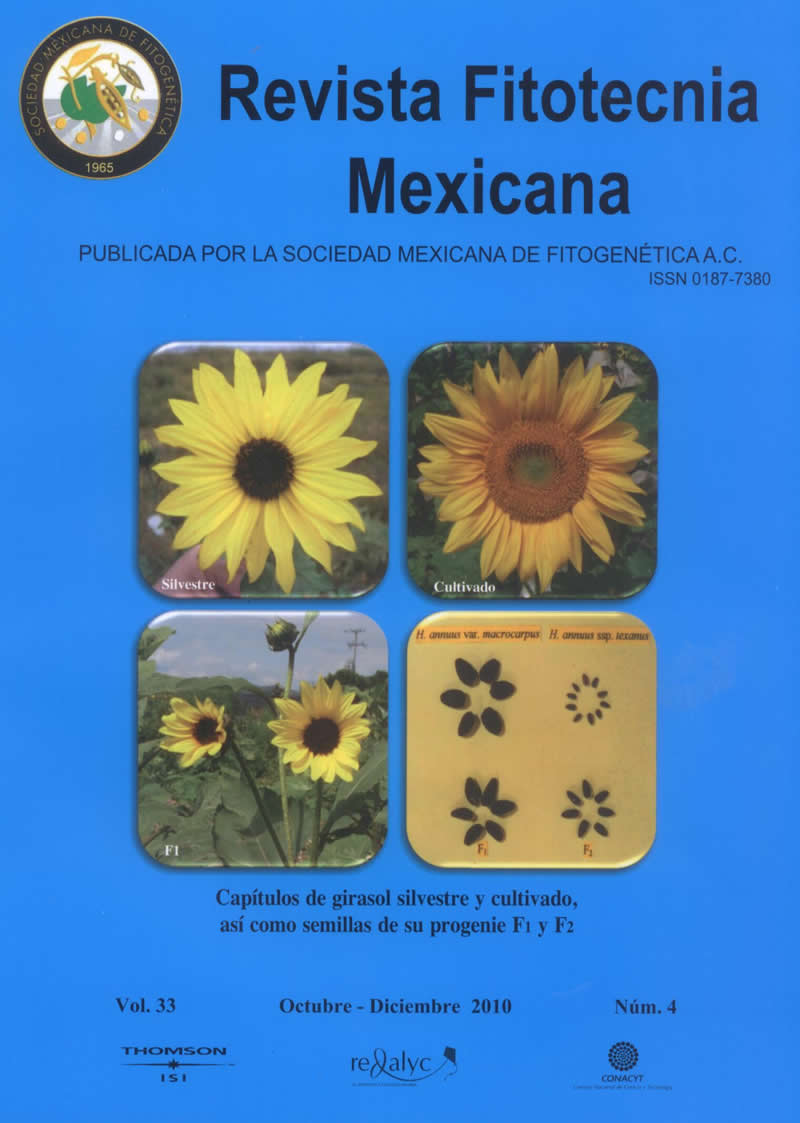CHARACTERIZATION AND YIELD PERFORMANCE OF NATIVE MAIZE POPULATIONS FROM MOLCAXAC, PUEBLA
Main Article Content
Abstract
In Molcaxac, Puebla 98 % of maize (Zea mays L.) growers use local landrace populations. The aim of this study was to evaluate grain yield and agronomically characterize a sample of the local diversity maize populations from this country, Pue. Fifty-six genotypes –52 local populations and four hybrids recommended for that area– were evaluated in 2007 under rainfed conditions, in three locations of the region. Results showed the existence of local populations with higher yield (MX-6, SA-2, and Sc-3 which yielded 5.6, 4.8 and 4.5 t ha-1) than the introduced ones, so these populations have a better adaptation to the prevailing regional soil and climate conditions. The principal component analysis defined that the most influential traits to explain the observed variation were: female flowering, number of leaves above the ear, area of ear leaf, plant appearance, ear length, number of kernel rows per ear, ear diameter, kernel length, kernel width, kernel thickness, cob diameter and pith diameter. The cluster analysis defined five groups of populations. It is concluded that there is a wide variation among local maize landraces in the Molcaxac, Pue. region, and that some landraces can produce a good yield under rainfed conditions. The observed variation is partly related to the geographical origin of the maize populations within the county.

